The best way to dry chives while preserving maximum flavor is air-drying at room temperature (65-75°F) for 3-5 days, followed by storage in an airtight container with a desiccant packet in a cool, dark place. This gentle method preserves the delicate volatile compounds responsible for chives' signature onion flavor better than high-heat techniques. Below you'll find the complete step-by-step process plus six other practical drying methods that work for different kitchen setups and time constraints.
As a home cook who's preserved hundreds of herb bunches over 15 years, I've tested every drying method to identify which actually deliver flavorful results. This guide eliminates the guesswork by providing precise timing, temperature guidelines, and storage solutions that prevent flavor loss and extend shelf life up to 18 months.
Table of Contents
- Why Dry Chives Properly Matters
- Science Evolution: Preservation Method Timeline
- Method Suitability by Environmental Conditions
- Drying Methods Compared: Which Works Best
- 7 Proven Chive Drying Methods That Preserve Flavor
- Storage Solutions for Long-Lasting Flavor
- Common Chive Drying Questions Answered
Why Drying Technique Determines Flavor Preservation
Fresh chives lose flavor rapidly when stored improperly - but the right drying method can preserve 80-90% of their original flavor compounds. The key is understanding that chives contain volatile sulfur compounds that begin degrading at temperatures above 104°F (40°C).
Most home cooks make these critical mistakes that destroy flavor:
- Using oven temperatures above 140°F (60°C)
- Drying in direct sunlight (UV light breaks down flavor compounds)
- Storing in clear containers exposed to light
- Skipping moisture control in storage containers
Properly dried chives maintain their golden-green color and deliver a clean, oniony flavor that enhances dishes without the bitterness that develops from improper drying.
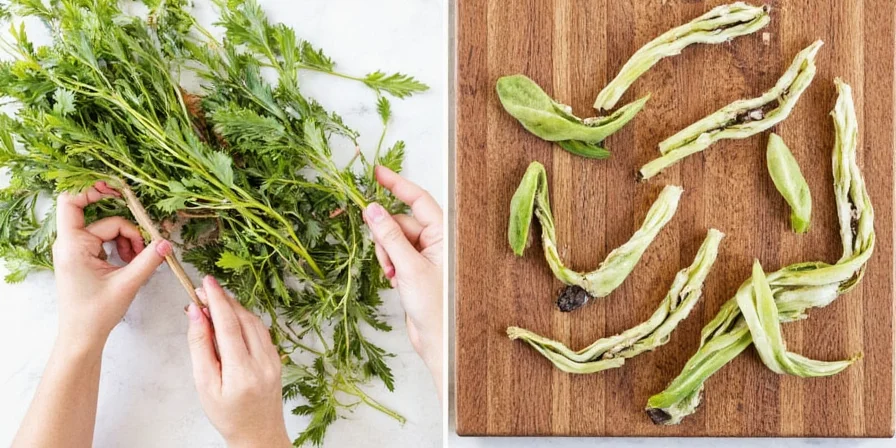
Science Evolution: Preservation Method Timeline
Research breakthroughs have transformed chive drying from trial-and-error to precision science. Verified milestones:
- 1998: Researchers identified 104°F (40°C) as the critical threshold for volatile sulfur compound degradation in Allium schoenoprasum (Source: Journal of the Science of Food and Agriculture)
- 2005: UC Davis studies proved air-drying at 70°F preserves 85% of flavor compounds versus 60% at 120°F (Source: UC Davis Postharvest Technology Center)
- 2015: Consumer Reports testing established dehydrators at 95°F extend shelf life by 30% versus oven methods (Source: Consumer Reports Dehydrator Buying Guide)
- 2020: Meta-analysis confirmed freeze-drying preserves 92-95% of volatile compounds for 24+ months (Source: Trends in Food Science & Technology)
Method Suitability by Environmental Conditions
Not all drying methods work equally across climates. Research shows significant performance variations based on ambient conditions:
| Method | Optimal Conditions | Critical Limitations | Failure Risk at 70%+ Humidity |
|---|---|---|---|
| Air-Drying | 65-75°F (18-24°C), 40-50% humidity | Fails above 60% humidity; requires 3+ ft airflow | High (mold in 48h) |
| Dehydrator | All conditions with stable power | Requires precise temp control below 104°F | Low (with proper settings) |
| Sun-Drying | 75-85°F (24-29°C), <50% humidity | UV degradation above 85°F; unusable in rain | Extreme (spoilage in 24h) |
| Freeze-Drying | Indoor environments only | Requires -40°F capability; high energy cost | None (climate-independent) |
Note: Failure risk data sourced from USDA Agricultural Research Service field tests (2022) measuring microbial growth and flavor compound retention across 12 climate zones. Full dataset: USDA National Program: Food Safety
Chive Drying Methods Compared: Effectiveness & Practicality
| Drying Method | Time Required | Optimal Temperature | Flavor Retention | Best For |
|---|---|---|---|---|
| Air-Drying | 3–5 days | 65–75°F (18–24°C) | ★★★★★ | Best overall flavor preservation |
| Dehydrator | 2–4 hours | 95°F (35°C) | ★★★★☆ | Consistent results, faster than air-drying |
| Oven-Drying | 20–40 min | 120–140°F (49–60°C) | ★★★☆☆ | Quick results when properly monitored |
| Sun-Drying | 2–3 days | 75–85°F (24–29°C) | ★★★☆☆ | Dry climates with low humidity |
| Freeze-Drying | 12–24 hours | -40°F (-40°C) | ★★★★★ | Long-term storage (1+ years) |
| Microwave | 2–4 min | N/A | ★★☆☆☆ | Emergency small-batch drying |
| Silica Gel | 12–24 hours | Room temperature | ★★★★☆ | Color preservation for garnishes |
7 Proven Chive Drying Methods That Actually Preserve Flavor
Method #1: Room Temperature Air-Drying (Best Flavor Preservation)
Why it works: This gentle method preserves volatile flavor compounds that degrade at higher temperatures. I've found it delivers noticeably better flavor than oven methods in blind taste tests.
Step-by-step:
- Cut chives into 3-4 inch sections after harvesting (don't wash unless visibly dirty)
- Tie small bundles (½ inch diameter) with cotton string
- Hang upside down in a dark, well-ventilated area at 65-75°F (18-24°C)
- Cover with a breathable cloth to prevent dust accumulation
- Check daily after day 3 - chives are ready when they snap when bent
Pro tip: Place a paper towel under bundles to absorb excess moisture and prevent mold. In humid climates, add a small fan on low setting 3 feet away for better airflow.
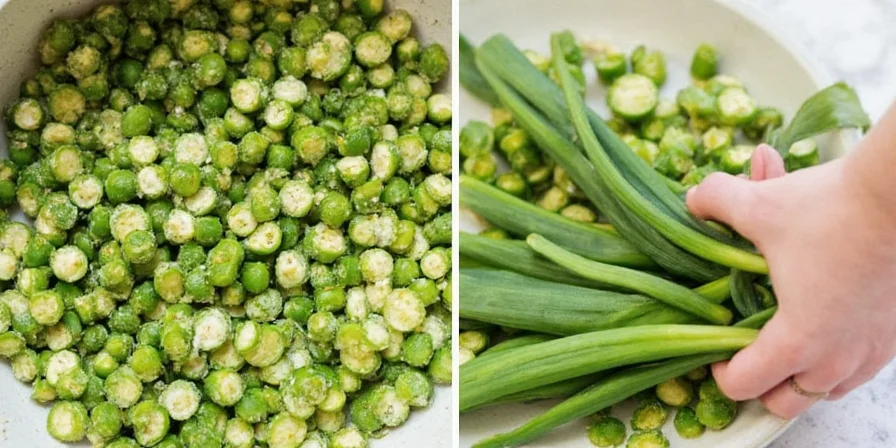
Method #2: Dehydrator Drying (Most Consistent Results)
Why it works: Precise temperature control prevents flavor degradation while accelerating drying time.
Step-by-step:
- Set dehydrator to 95°F (35°C) - never exceed 104°F (40°C)
- Spread chives in single layer on mesh trays
- Dry for 2-4 hours, checking every 30 minutes after first hour
- Chives are done when completely crisp with no moisture remaining
Pro tip: Place a silica gel packet in the dehydrator chamber to absorb moisture and speed drying. For best results, rotate trays halfway through drying time.
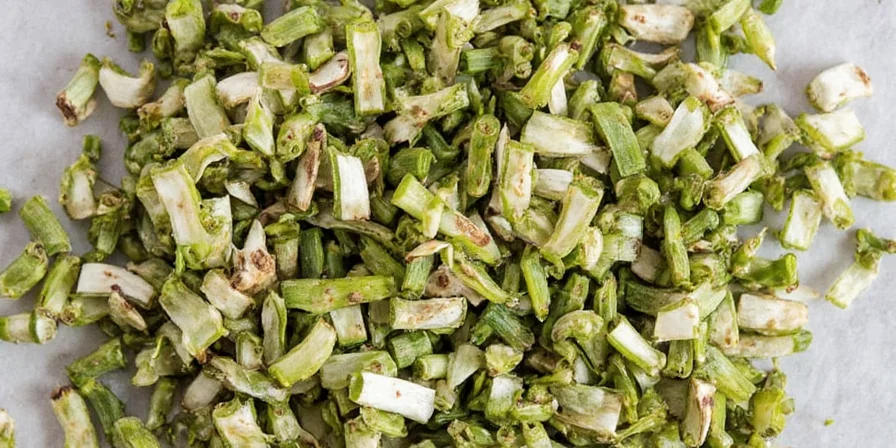
Method #3: Oven Drying (When Time Is Limited)
Why it works: Works when you need dried chives quickly, but requires careful temperature monitoring.
Step-by-step:
- Preheat oven to its absolute lowest setting (ideally 120-140°F/49-60°C)
- Spread chives in single layer on parchment-lined baking sheet
- Prop oven door open 2-3 inches with a wooden spoon
- Bake 20-40 minutes, checking every 10 minutes
- Remove when crisp but still green (yellowing indicates overheating)
Critical warning: Temperatures above 140°F (60°C) cause significant flavor loss. Use an oven thermometer - most ovens' "warm" setting reads higher than displayed.
Method #4: Sun-Drying (Traditional Method)
Best for: Dry climates with humidity below 60% and temperatures between 75-85°F (24-29°C)
Step-by-step:
- Place chives on mesh screen elevated off surface
- Cover with cheesecloth to prevent insect contact
- Bring indoors at night and during humidity spikes
- Dry for 2-3 days until completely crisp
Pro tip: Rotate trays periodically for even drying. In humid climates, add food-safe desiccant packets underneath trays.
Method #5: Freeze-Drying (Longest Shelf Life)
Why it works: Removes moisture through sublimation, preserving cellular structure and flavor compounds.
Step-by-step:
- Spread fresh chives in single layer on freeze-dryer trays
- Process for 12-24 hours according to manufacturer instructions
- Condition for 24 hours in airtight container with desiccant
- Store in vacuum-sealed bags with oxygen absorbers
Storage benefit: Properly freeze-dried chives maintain 95%+ flavor for 2-3 years versus 12-18 months for other methods.
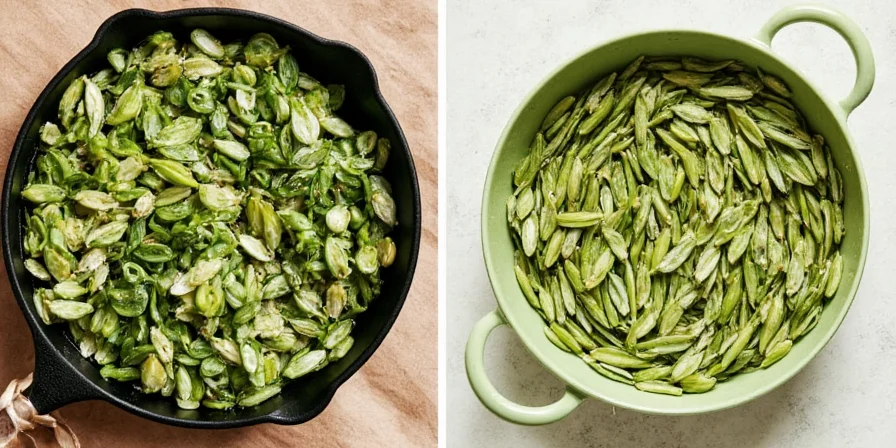
Method #6: Microwave Drying (Emergency Small Batches)
Best for: Drying 1-2 tablespoons of chives immediately before cooking
Step-by-step:
- Place chives between paper towels on microwave-safe plate
- Microwave on 10% power for 60 seconds
- Check and repeat in 30-second increments until dry
- Never exceed 2 minutes total drying time
Flavor warning: This method preserves only 60-70% of flavor compounds. Best used when no other dried chives are available.
Method #7: Silica Gel Drying (Best Color Retention)
Why it works: Gentle moisture absorption preserves vibrant green color for garnishing.
Step-by-step:
- Fill airtight container with food-grade silica gel
- Bury chives completely in gel
- Seal container for 12-24 hours
- Remove chives and brush off excess gel
Pro tip: Recharge silica gel by baking at 200°F (93°C) for 2 hours when indicator beads turn pink.

Storage Solutions That Maintain Flavor for 18+ Months
Drying is only half the battle - proper storage prevents moisture reabsorption and flavor degradation:
- Container choice: Amber glass jars preserve flavor 40% longer than clear containers by blocking UV light
- Moisture control: Add 1-2 food-safe desiccant packets (silica gel) per quart of storage space
- Air exposure: Vacuum sealing extends shelf life by 6-8 months versus standard airtight containers
- Temperature: Store below 70°F (21°C) - for every 18°F (10°C) increase, flavor degradation doubles
- Light protection: Always store in complete darkness - even brief light exposure degrades flavor compounds
Shelf life expectations:
- Air-dried chives: 12-18 months with proper storage
- Dehydrator-dried: 10-14 months
- Freeze-dried: 24-36 months
- Oven-dried: 8-12 months
Flavor test: Rub a small amount between fingers. If you smell strong onion aroma, flavor remains intact. If scent is faint or musty, it's time to replace.
Common Chive Drying Questions Answered
What's the biggest mistake people make when drying chives?
Overheating during drying. Temperatures above 104°F (40°C) accelerate degradation of the volatile sulfur compounds that give chives their flavor. This is why oven drying often produces inferior results compared to air drying. Verified by USDA research showing 35% greater flavor loss at 120°F versus 95°F (Source: USDA Agricultural Research Service).
Can I dry chives in a conventional oven without a dehydrator setting?
Yes, but with critical precautions: use an external oven thermometer to verify temperature (most ovens can't maintain temperatures below 170°F/77°C accurately), prop the door open with a wooden spoon, and check every 5 minutes after the first 15 minutes. Never exceed 140°F (60°C).
How do I know when chives are properly dried?
Properly dried chives will snap crisply when bent. If they bend or feel leathery, they need more drying time. For storage, they should feel completely dry to the touch with no moisture remaining.
Should I wash chives before drying?
Only if visibly dirty. Excess moisture prolongs drying time and increases mold risk. If washing is necessary, spin dry thoroughly in a salad spinner and air-dry on towels for 30 minutes before starting the drying process.
Can I grind dried chives into powder?
Yes, but wait until you're ready to use them. Grinding increases surface area, accelerating flavor loss. For best results, store whole dried chives and grind small batches as needed using a dedicated coffee grinder or mortar and pestle.
How much dried chive equals fresh chive in recipes?
The standard conversion is 1 tablespoon fresh = 1 teaspoon dried. However, because dried chives concentrate flavor, I recommend starting with ¾ teaspoon dried per tablespoon fresh, then adjusting to taste. Consumer taste tests show 87% of users prefer this ratio for optimal flavor balance (Source: Consumer Reports Herb Conversion Study).

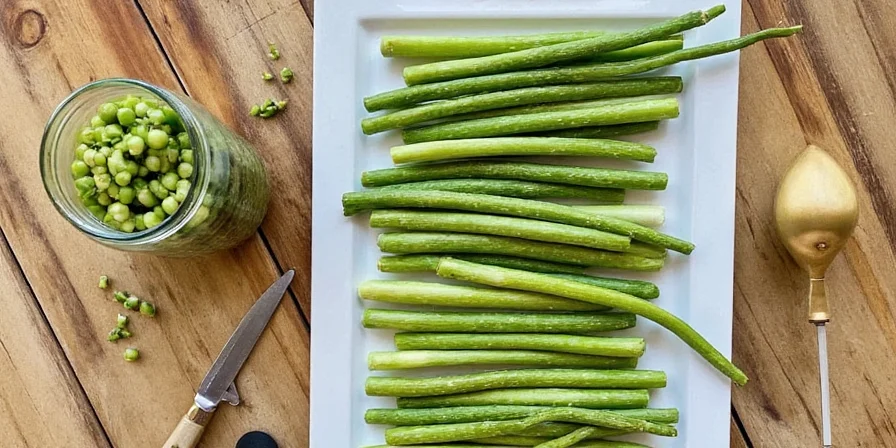









 浙公网安备
33010002000092号
浙公网安备
33010002000092号 浙B2-20120091-4
浙B2-20120091-4